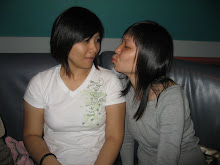Example of Rate Card:
1) Media Banc International Rate Card
3) 2008 Radiology Malaysia Website Advertising and Sponsorship Rates
Those above are some of the rate cards that I found. Discussion of the above rate cards are discussed according to the sequence listed above.
Media Banc International Rate Card
For the Media Banc International Rate Card, this rate card is developed in 10th Dec 2006. Media Banc is a company which covers a large geographical area, where it included
Besides, there are two advertising monitoring services provided by their company which is (i) print (Newspaper & Magazine); (ii) Electronic/Broadcast (TV & Radio). Each of this category is cost 5.00 USD per advertising clip and 10.00 USD per advertising clip respectively.
The Star (Newspaper)
The spaces of ad of The Star is divided into two broad categories which are (i) National edition; & (ii) StarMetro edition. Due to the geographical distribution of this newspaper are different, StarMetro edition is divided into 3 categories which are (i) Central, (ii) North, & (iii) South & East.
Rate of advertise in National edition and StarMetro edition is different where advertising rate in National edition is expensive than StarMetro. This is because ad in National edition is able to reach by every citizen who read The Star. Because of StarMetro is published according to the area, thus the total of citizen who comes across the ad are far fewer.
Advertise in newspaper also we are able to choose whether we want to advertise in black and white or full colour. And of course advertise in full colour is far more expensive than in black and white. Besides, the more insertions, the cheaper the price.
2008 Radiology Malaysia Website Advertising and Sponsorship Rates
Advertisements in website could be in various forms which include banner, left side bar, right side bar, banner (e-mail newsletter), and advertorials. Each form set different rate of advertise. For example, if advertise a banner ad in Homepage, the rate of advertise on the top of the page (RM400) is double the rate of advertise on the bottom of the page (RM200) although both the ads is appear in the same Homepage.
Besides, there are also some ad formats and different pixels. For instances, Macromedia Flash, GIF graphics file, 468 x 60 pixel GIF, 125 x 125 pixel GIF, 120 x 240 pixel GIF and etc.

